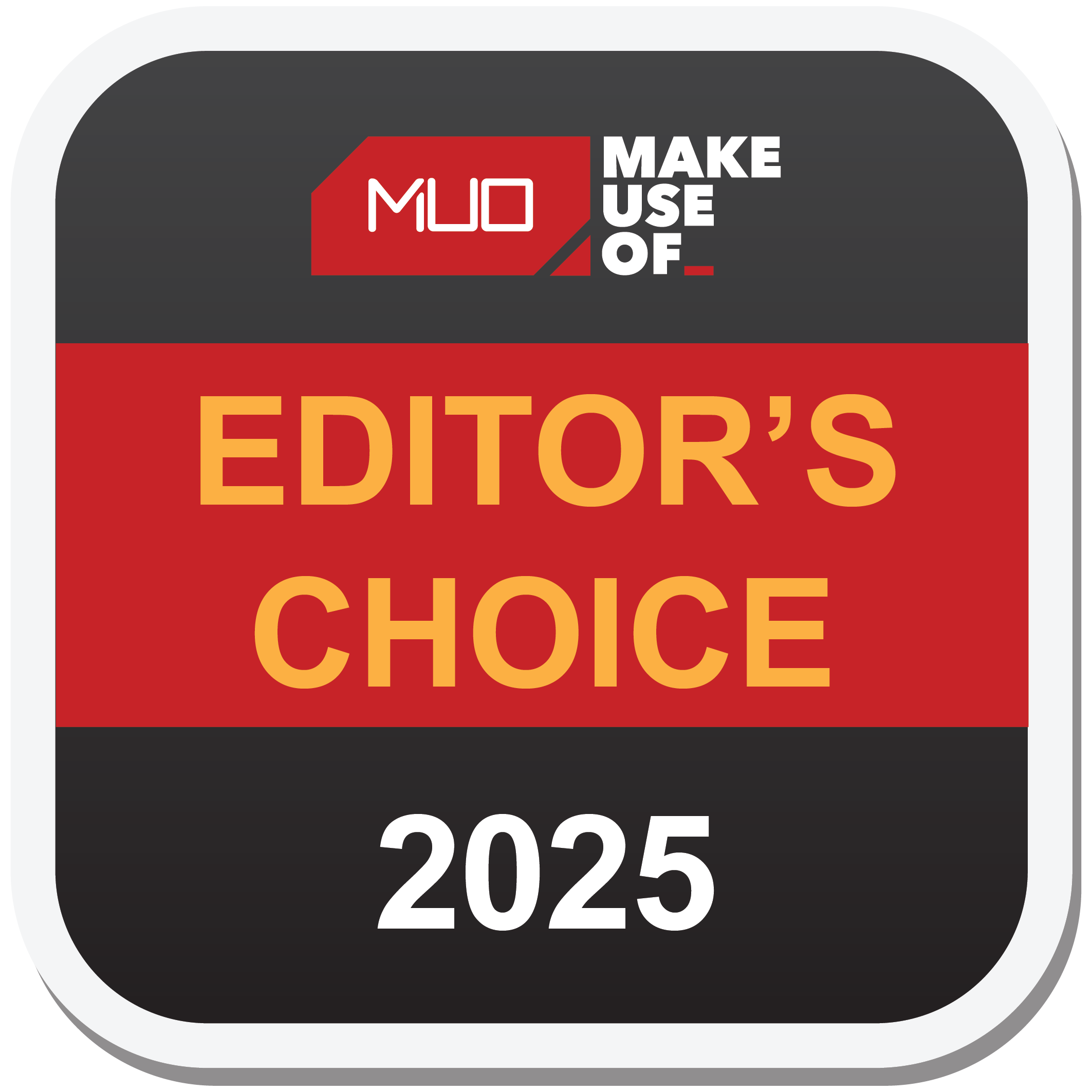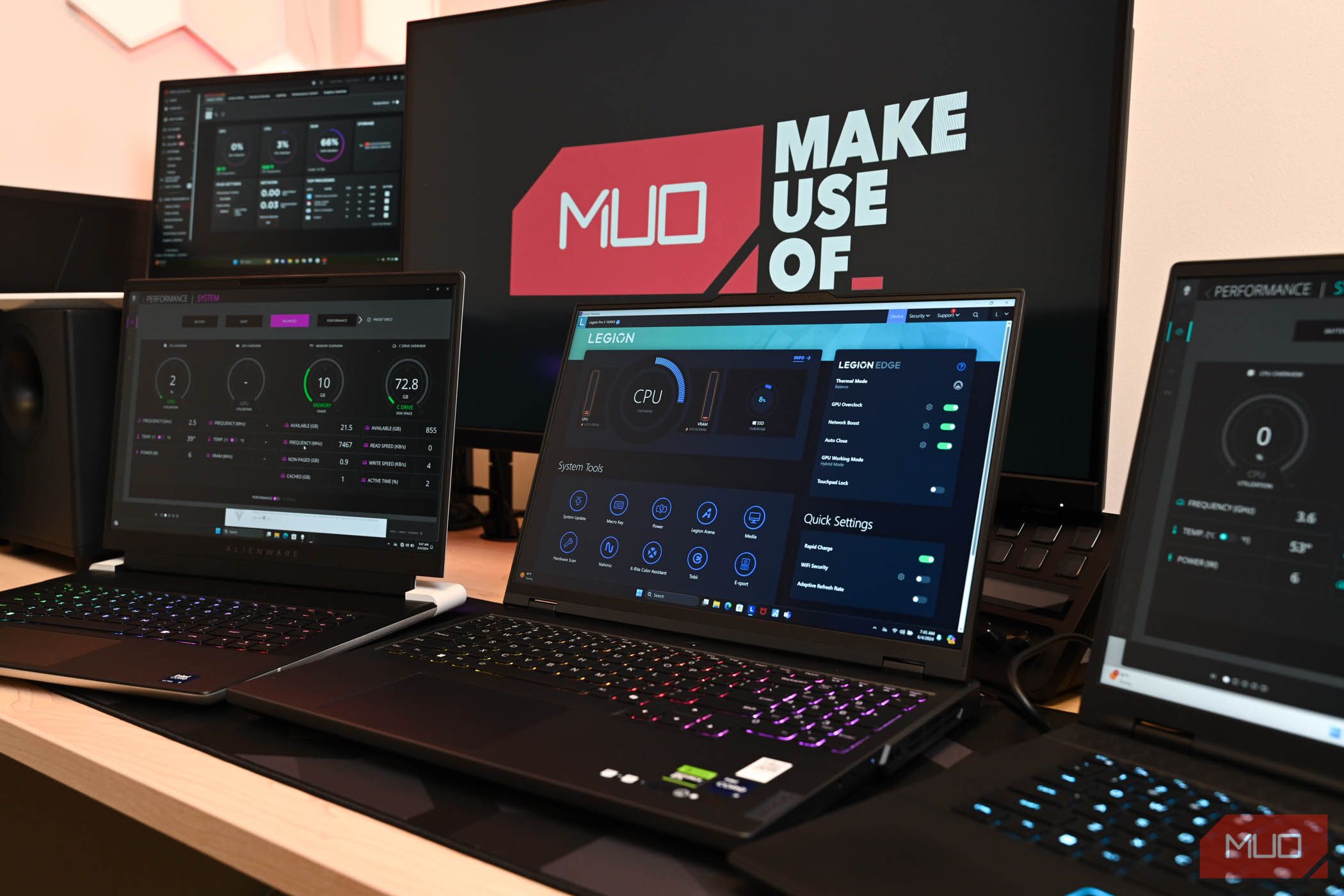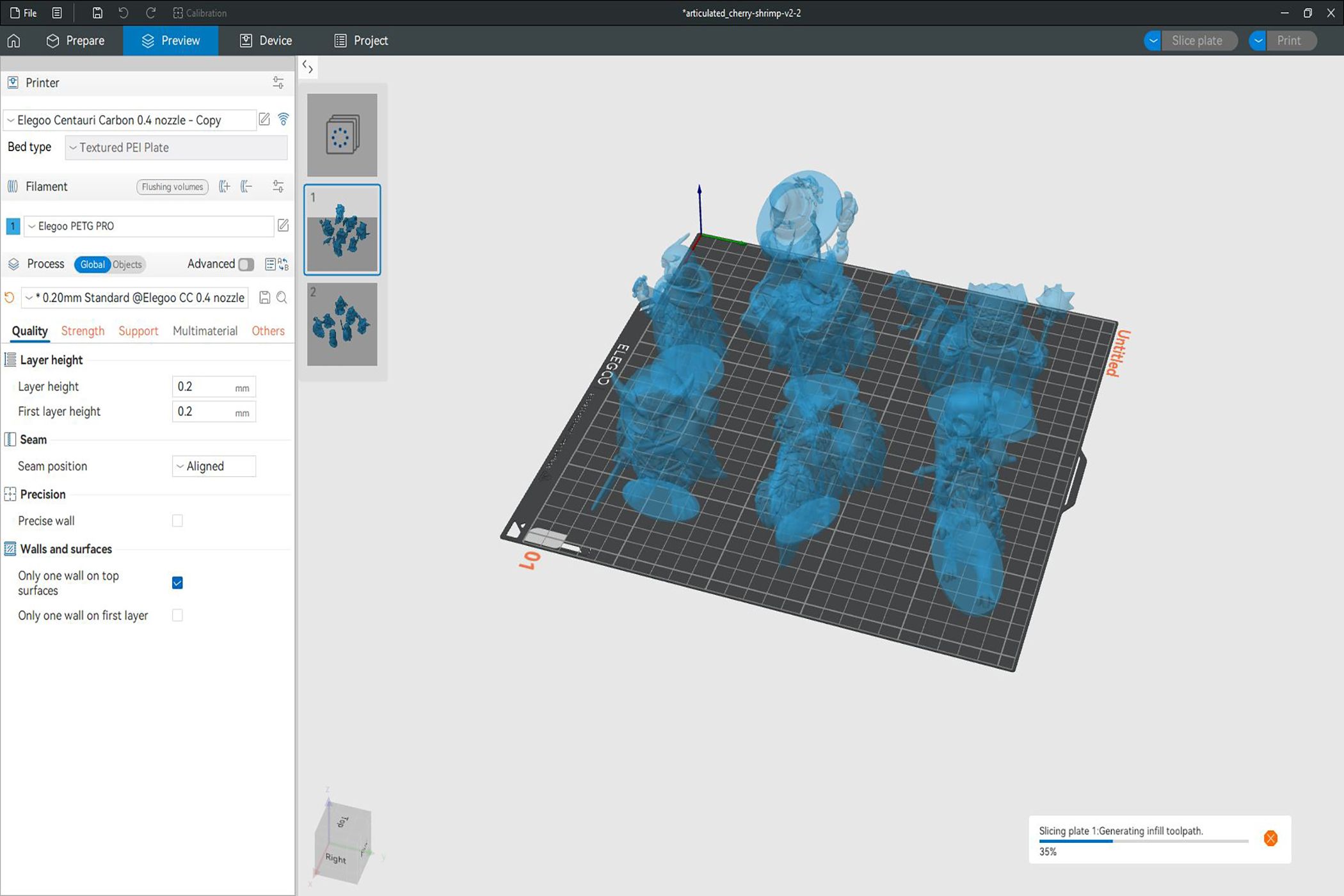Summary
- The enclosed chamber and heated bed allow for better print results.
- The chamber camera allows for better live monitoring and a quick primary.
- Flexible prints speeds allow for quick, quality results or quieter printing when not in a rush.
The Elegoo Centauri Carbon is an incredibly affordable option that offers power and utility. Rather than focusing on invisible power, its features benefit the average user while reducing guesswork to allow more focus on printing. Although imperfect, those willing to invest time and effort in learning its controls can easily achieve higher-quality prints in less time.


Elegoo Centauri Carbon
The Elegoo Centauri Carbon offers a variety of beginner-friendly features that makes 3D printing inviting without limiting the user that’s ready for more advanced applications.
- Dual-sided plate helps simplify introduction to materials
- Chamber camera allows you to monitor with less struggle
- Automated calibration and checks allow for better problem solving
- Quick heating allows for faster printing and print removal
- Speedily tackles more complex jobs even on silent setting
- Weak light source limits usefulness of camera at night
- Filament replacement can take a while to properly feed
- Chamber isn’t heated

See Our Process
How We Test and Review Products at MakeUseOf
While we receive product samples to review, we don’t allow companies to compromise our independence.
Price and Availability
The Elegoo Centauri Carbon printer is available for preorder on Elegoo’s website for $299.99. It is estimated to ship before July 31, 2025. Based on availability, some spare parts, accessories, and filament will ship between now and August.
Getting Started With the Printer
As is typical with mostly preassembled printers, the Elegoo Centauri Carbon has a few minor attachments to take care of. This consists of the quick removal of the greatly highlighted (both with stickers and on-screen notice) locking screws, installation of the screen, and the attachment of the filament roll holder. Beyond some delicate screen handling during fitting, the longest leg of the initial setup is during the printer’s automatic leveling.
Whether doing it for the first time or for later problem-solving, the roughly 20-minute process leaves plenty of time to step away and tackle a small task while the printer gets itself ready.
Once the machine has been set up, you should connect the device to Wi-Fi to grab firmware updates and get the printer connected for better integration with its suggested slicer software. Familiarizing yourself with the layout of the 4.3-inch screen’s menus will also allow you to more easily make setting tweaks on the fly and mitigate downtime if you run out filament mid-print. Responsiveness can be a bit plucky in some spots, but the major screen inputs work well.
Working With Elegoo’s Slicer
Elegoo’s slicer for the Centauri Carbon is based on Orca and functions as a lightly modified version. Whether you’re familiar with it or not, the slicer’s basic options allow for quick setup when combined with the available Elegoo profiles. Depending on your print choice, you likely won’t have to modify many of the default options, which complement the beginner-aimed nature of the printer.
Most automated feature options, such as support generation or arrangement on the plate, work well for most easily available prints. For any heavier modifications to existing models, you may wish to work with another slicer such as Cura.
Whether saving your print file to a USB stick or sending it directly to the printer over the network, the process was equally quick. With the included chamber camera, the slicer software allows for live monitoring of your prints via the camera, which allows for greater distance from the printer and a quicker glance at a print’s progress when entirely enclosed.
Experimenting With An Enclosed Printing Environment
Beyond the speed offerings of this CoreXY printer, the enclosed printing environment allows for better temperature management across various environments. For newcomers, managing different material temperatures can prove challenging in a fully open printer. Still, the option to manage fan use and vent with the top removable lid makes this much easier.
While the printer doesn’t feature chamber heating, both the hot end and print bed do come to temperature quite quickly. For materials that might be more troublesome to adhere, the option to heat the bed up to a maximum of 110°C and leave it at that temperature in the enclosed printer helps.
Additionally, Elegoo provides a textured PEI dual-sided plate with a specific side dedicated to PLA adhesion. If you finish your printing while you’re away, the option to reheat the print bed eases print removal, especially when pulling from the maximum adhesion PLA side. For any small bits left behind, the included scraper can help with the job, whether tackling leftover thin support bases or brim residue.
While working with a fully enclosed print, the single light inside the chamber isn’t particularly bright, so you may find yourself struggling to see portions of the print process or finer details. This is more apparent when using the camera either for live monitoring or when reviewing the time-lapse footage taken by it.
Adjustments During the Print Process
While the Centauri Carbon tries to limit how much you need to think about your prints between its self-checking and included slicer profiles, you’ll still run into the occasional need to fine-tune settings during the actual printing process.
Some of the default temperatures associated with Elegoo filament won’t work quite as well with specific prints, and you’ll need to modify these once the print begins. Adjustments can be made quickly, so you don’t have to worry too much about a major temperature change delay whether you’re raising or lowering it after the initial preheating.
If you do run short of filament during the print process, the printer does a good job of detecting that the run-out has occurred. During this, the hotbed nozzle wiper and filament waste bin make it easier to monitor that the hot end has started processing the new material. However, in testing, it may take a few retries before you successfully see the results of this with excess popping out of the waste chute.
How Well Does It Print?
During testing, I tried to take advantage of both the max print speed of 500 mm/s and the 256 x 256 x 256 cm build volume by putting the printer through a series of extended back-to-back print cycles. To this end, I alternated between a variety of detailed print jobs consisting of busts, full beds of miniatures, and articulated designs.
The design of the Centauri Carbon focuses on removing vibrations for better, smoother prints even at higher speeds, and the results were impressive for a sub-$200 printer.
Print imperfections were based off either the specific automated support generation or travel pathing between certain prints. These were usually minor and focused around small, intricate details such as the highly curled or pointed tips of the models.
Overall, the printer did an excellent job of handling different variants of PETG and PLA, whether working with Elegoo’s official materials or leftover Anycubic filament that was on hand.
Cleaning Up Your Prints and Maintenance
During testing, many prints that I worked with required tree supports to varying degrees. They never felt too hard to remove, as could easily be the case in less temperature-regulated 3D printers. For the times that I couldn’t immediately get to them after printing was completed, letting the bed heat up for a couple of minutes in the enclosed casing helped save me from further struggle.
While the Centauri Carbon removes a lot of unseen variables that can create a print failure, it’s important to note you’ll still run into some upkeep demands. Changing the hot end on the Centauri Carbon is a simple procedure, but it does work best with a smaller set of hands and some care for fitting. Similarly, you’ll have to maintain the adhesion of the printing plate and try to avoid getting too many impurities on its surface.
Should You Buy the Elegoo Centauri Carbon?
When considering the Elegoo Centauri Carbon, you’ll want to ensure you’re getting the build size you need along with other features. Overall, it’s a great printer that works for most users looking to get into 3D printing with fewer facets to micromanage. If you’re willing to work with the printer and gradually learn more about upkeep, it’s one that can consistently quality results with minor hiccups.
Ultimately, it’s an easy recommendation for those looking for an affordable printer to use for major material types without too much hassle. Some features can be nitpicked, but the value of its core features can easily outweigh the rest.


Elegoo Centauri Carbon
The Elegoo Centauri Carbon offers a variety of beginner-friendly features that makes 3D printing inviting without limiting the user that’s ready for more advanced applications.
















:max_bytes(150000):strip_icc()/twoku-twtich-roku-app-2053432b763a40d788ef726974d9ed2a.png?w=1174&resize=1174,862&ssl=1)



Leave a Comment
Your email address will not be published. Required fields are marked *